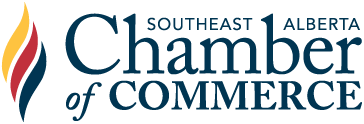The Government of Alberta is introducing new legislation that will impact Alberta producers. Bill 26 also known as the Farm Freedom and Safety Act (FFSA) changes current employment, workers compensation coverage, and occupational health and safety requirements for producers. The following guide will serve as an overview of how these changes will impact you.
What is considered a farm in Alberta for the purposes of occupational health and safety (OHS) under the FFSA?
Included Operations:
- production of crops, including fruits and vegetables, through the cultivation of land
- raising and maintenance of animals or birds
- keeping of bees
Not Included:
- Landscaping
- raising or boarding of pets
Exempt from any OHS Rules:
- family members of the owner of a farm or ranch operation
- the private residence, which includes areas around the home like the lawn area, backyard or garden
- when people are doing no-work-related activities on their land, such as recreational activities like horseback riding or hunting
What about greenhouses, mushroom farms, nurseries or sod farms?
Current occupational health and safety, labour relations, and workers compensation requirements will continue to apply to these operations. They will be included under farming and ranching for the purposes of employment standards only.
Who do these rules apply to?
OHS rules only apply to an operation if a waged, non-family worker is present on the farm or ranch, and then only to those individuals.
Who is considered a worker?
Only non-family members who perform work for pay are considered workers.
Family members can be defined as:
- the spouse or adult interdependent partner of the farm or ranch owner; or
- a child, parent, grandparent, sibling, aunt, uncle, niece, nephew or first cousin of the farm or ranch owner. This relation can be by blood, marriage, or adoption, or by virtue of an adult interdependent relationship
As a farm owner, there may be times that the contractor you hire performs activities outside what is defined as farming and ranching for the purposes of occupational health and safety legislation. Both you and the contractor will have to meet requirements under all areas of the Occupational Health and Safety Act, Regulations and Code.
What rules under the Farm Freedom and Safety Act apply to my farm?
Family Farm:
- WCB - No changes
- Employment Standards - No changes
- OHS - No changes
1 - 5 Non-Family Waged-Workers:
- WCB - Change: Exempt from requirements to have WCB coverage. Private insurance or WCB will be optional.
- Employment Standards - Change: Farms or ranches with 5 or fewer employees, not including family members, and employees who work less than 6 months consecutively will be exempt from all employment standards.
- OHS - Change: Will be required to follow the Alberta Occupational Health and Safety Act. Will be exempt from the Regulations or the Code.
6+ Non-Family Waged-Workers:
- WCB - Change: Farms and ranches with more than 5 waged, non-family employees will be required to have workplace insurance, but will be able to choose which workplace insurance options works best for their operation (WCB or private).
- Employment Standards - Change: Farms and ranches with more than 5 waged non-family employees will still be required to meet employment standards, with some exemptions.
- OHS - Change: Will be required to follow the Occupational Health and Safety Act. Will be exempt from the Regulations and Code.
How does the Act Impact my Farm?
Below is a brief snapshot of some parts of the Occupational Health and Safety Act that will be important to your farm operations:
Part 1: Obligations (Responsibilities)
- Establishes the specific responsibilities for employers, supervisors, workers, suppliers, service providers, owners, contractors, prime-contractors, self-employed persons, and temporary staffing agencies.
Part 2: Duty to Inform (Right to Know)
- Employers must provide information that may affect the health and safety of workers including information about the hazards, hazard controls, and the work practices and procedures used on the farm.
Part 3: Joint Work Site Health and Safety Committees and Health and Safety Representatives (Right to Participate)
- Outlines the specific requirements for establishing a Health and Safety Representative or Joint Work Site Health and Safety Committee.
Part 4: Dangerous Work and Discriminatory Action (Right to Refuse Dangerous Work)
- Workers have the right refuse dangerous work.
Part 5: Program and Practice
- Farms with 20 or more workers are required to establish a health and safety program in consultation with their joint work site health and safety committee. This part also describes the circumstances of when an incident must be reported to Occupational Health and Safety.
Part 8: Compliance and Enforcement
- Outlines the role of Occupational Health and Safety officers and what measures they can take to for compliance and enforcement.
Part 10: Offences and Penalties
- Outlines the circumstances of when someone could be found guilty of an offense under the Act and the associated penalties.
When does this come into effect?
Changes to the legislation will come into effect on January 31, 2020.
What if I have more questions?
For more information on:
- Bill 26: https://www.alberta.ca/farm-freedom-and-safety-act.aspx
- The Occupational Health and Safety Act visit: https://www.alberta.ca/ohs-act-regulation-code.aspx.
If you have further questions about these changes visit www.agsafeab.ca for more updates. If you have specific concerns about your farm contact us at 403-219-7901 or at info@agsafeab.ca
